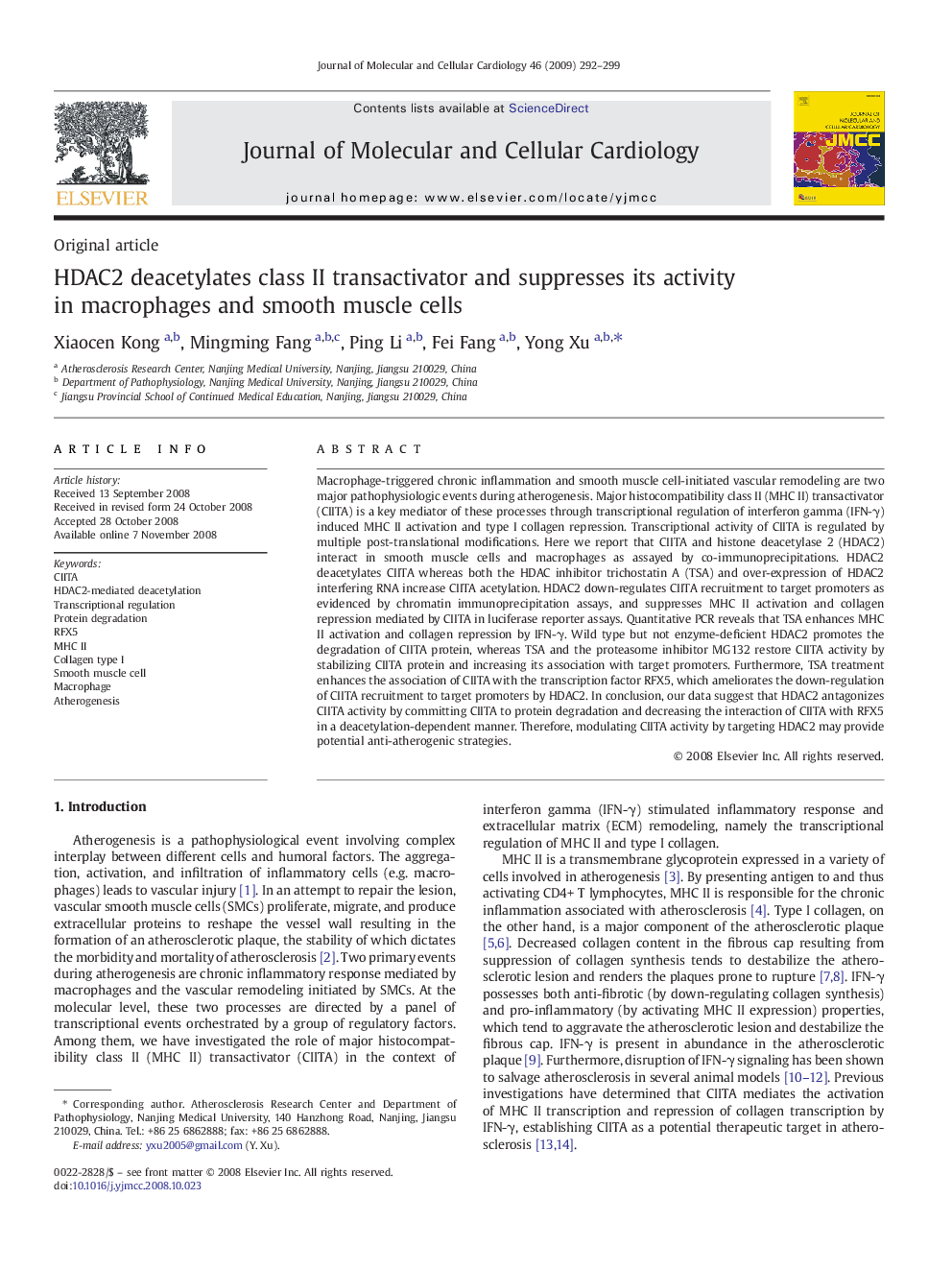| کد مقاله | کد نشریه | سال انتشار | مقاله انگلیسی | نسخه تمام متن |
|---|---|---|---|---|
| 2191421 | 1097861 | 2009 | 8 صفحه PDF | دانلود رایگان |

Macrophage-triggered chronic inflammation and smooth muscle cell-initiated vascular remodeling are two major pathophysiologic events during atherogenesis. Major histocompatibility class II (MHC II) transactivator (CIITA) is a key mediator of these processes through transcriptional regulation of interferon gamma (IFN-γ) induced MHC II activation and type I collagen repression. Transcriptional activity of CIITA is regulated by multiple post-translational modifications. Here we report that CIITA and histone deacetylase 2 (HDAC2) interact in smooth muscle cells and macrophages as assayed by co-immunoprecipitations. HDAC2 deacetylates CIITA whereas both the HDAC inhibitor trichostatin A (TSA) and over-expression of HDAC2 interfering RNA increase CIITA acetylation. HDAC2 down-regulates CIITA recruitment to target promoters as evidenced by chromatin immunoprecipitation assays, and suppresses MHC II activation and collagen repression mediated by CIITA in luciferase reporter assays. Quantitative PCR reveals that TSA enhances MHC II activation and collagen repression by IFN-γ. Wild type but not enzyme-deficient HDAC2 promotes the degradation of CIITA protein, whereas TSA and the proteasome inhibitor MG132 restore CIITA activity by stabilizing CIITA protein and increasing its association with target promoters. Furthermore, TSA treatment enhances the association of CIITA with the transcription factor RFX5, which ameliorates the down-regulation of CIITA recruitment to target promoters by HDAC2. In conclusion, our data suggest that HDAC2 antagonizes CIITA activity by committing CIITA to protein degradation and decreasing the interaction of CIITA with RFX5 in a deacetylation-dependent manner. Therefore, modulating CIITA activity by targeting HDAC2 may provide potential anti-atherogenic strategies.
Journal: Journal of Molecular and Cellular Cardiology - Volume 46, Issue 3, March 2009, Pages 292–299